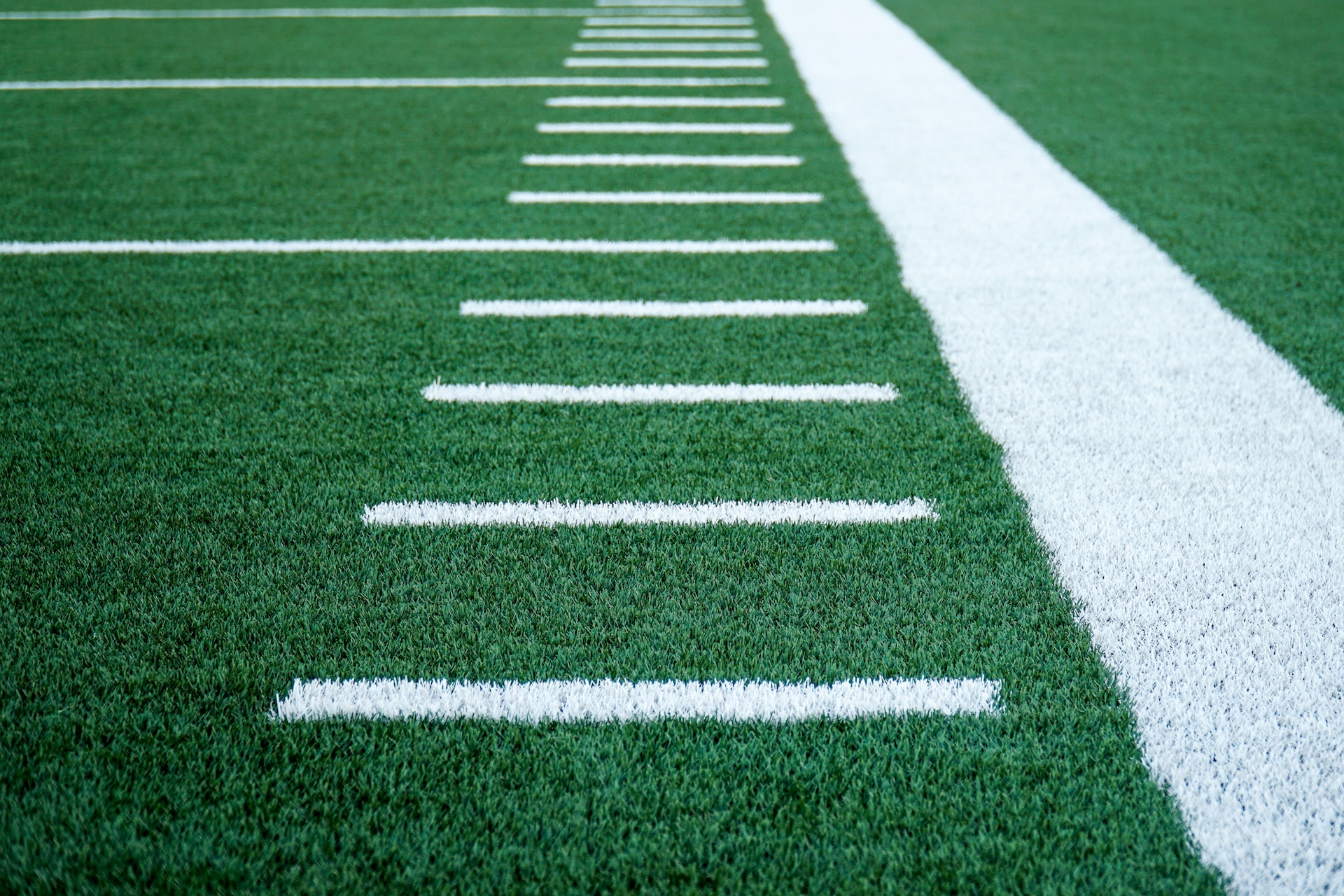This guide explains what the puck line means when you want to place some wagers on hockey action.

What is the Puck Line in Hockey Betting?
Hockey offers a fast-paced arena for avid sports bettors to test their wagering skills. And while many are familiar with traditional moneyline bets, there’s another betting option in the hockey world that packs a punch – the puck line. Betting the puck line offers a distinctive way to wager on hockey games by introducing a point spread betting element to match outcomes.
In this article, we’ll break down the fundamentals of the puck line in hockey betting – from answering the question: ‘What is puck line betting?’ to explaining the concept of favorites and underdogs for this hockey variation of the point spread wager. And without further ado, let’s hit the ice and explore this electrifying dimension of sports betting!
Puck Line Betting Definition
Puck line bets, or point spread betting, involve considering the number of goals by which a team will win or lose a game. The hockey puck line introduces a unique twist to the traditional moneyline bet where bettors choose a team to win, without regarding the goals scored or the winning margin.
The standard puck line in hockey betting is set at +/- 1.5 goals. If a bettor chooses the favored team with a -1.5 puck line, that team must win the hockey game by two or more goals for the bet to be a winning one.
On the other hand, if the bettor selects the underdog team with a +1.5 puck line, that team can either win the game outright or lose by a single goal, and the bet will still be successful.
Puck Line NHL Betting Examples
Let’s dive into a practical example to illustrate better the concept of puck line betting in NHL games.
Imagine a matchup between two iconic teams, the Toronto Maple Leafs and the New York Rangers. The puck line for this game is set at +/- 1.5, with the odds as follows:
| 🏒Team | Puck Line | Odds |
|---|---|---|
| Toronto Maple Leafs | -1.5 | -120 |
| New York Rangers | +1.5 | +110 |
Betting on the Favorite
Let’s say you believe that the Toronto Maple Leafs will dominate the game and win by two or more goals. You decide to place a puck line bet on the favored team with a -1.5 puck line at odds of -120.
There are two potential outcomes for this bet. If the Toronto Maple Leafs win by two or more goals, your puck line bet on them will be successful, resulting in a payout of $183.33 for a $100 wager ($83.33 profit). On the other hand, if the Maple Leafs win by just one goal or lose the game, your puck line bet will be unsuccessful.
Betting on the Underdog
Let’s explore the reverse side of the puck line bet, focusing on the underdog New York Rangers with a +1.5 puck line at +110 odds.
If the Rangers win outright or lose by just one goal (e.g., 1-0, 2-1, 3-2), your wager results in a winning bet. And in this scenario, a $100 bet would result in a total return of $210, including the original stake and a $110 profit.
On the other hand, if the Rangers lose by two or more goals (e.g., 0-2, 1-3, 2-4), the puck line bet on them fails.
[table_list_v3 sort=”date” reviews=”166″ show_rating=”true” show_counter=”true” logo_aff_link=”true”]
Below is an example of a typical NHL puck line option, as seen on the DraftKings sportsbook:

2-Way and 3-Way Puck Line Betting
Hockey bettors can choose between two distinct types of puck line bets: 2-way and 3-way puck line betting. Each type offers a different approach and set of possibilities, catering to various betting preferences and strategies.
Let’s delve into the details of each and explore relevant examples to grasp the concept more effectively.
2-Way Puck Line Betting
In this commonly used NHL betting option, bettors have two possible outcomes: betting on the favored team to win by two or more goals or the underdog team to either win outright or lose by one goal.
Suppose the Boston Bruins are playing against the Detroit Red Wings, and the bet puck lines are set at +/- 1.5, with the following odds:
- Boston Bruins (-1.5): -140
- Detroit Red Wings (+1.5): +120
If the Boston Bruins win by two or more goals, a 2-way puck line bet on the team is successful. And if you bet $100, you would receive your original stake back, plus a profit of $71.43. Conversely, if the Boston Bruins win only by one goal or lose the game, your 2-way puck line wager on them would be unsuccessful, and you’ll lose your stake.
3-Way Puck Line Betting
3-way puck line betting introduces a third possible outcome for bettors to consider. Apart from the options available in 2-way NHL puck line betting, 3-way puck line betting includes a “tie” or “push” scenario.
If the game ends with a one-goal difference, neither the favorite nor the underdog covers the puck line, and the bet is considered a push. In such cases, the original stake is returned to the bettor.
From our previous example, a 3-way puck line bet on the Detroit Red Wings means that they either have to win by more than the specified puck line, win outright, or lose less than the specified puck line (+1.5) for the wager to be considered a win.
Puck Line vs. Moneyline
NHL bettors have the luxury of two primary options: puck line betting and moneyline betting. Both approaches offer distinct advantages and cater to different betting preferences. And below, we have highlighted the major differences between both forms of hockey wagers:
| 🌀Aspect | 🏒Puck Line Betting | 💵Moneyline Betting |
|---|---|---|
| Betting Focus | Goal margin | Outright winner |
| Spread | +/- 1.5 goals | No spread |
| Overtime Inclusion | Varies, but mostly insignificant | ✅Yes |
| Risk/Reward | High-risk/high reward | Lower risk/lower rewards |
| Strategic complexity | Higher | Lower |
| Widely available? | ✅Yes | ✅Yes |
How to Place a Puck Line Bet
[table_list_v3 sort=”date” reviews=”166,1105,171,8569,165″ show_rating=”true” show_counter=”true” logo_aff_link=”true”]
Placing a puck line wager is a thrilling way to engage in NHL betting, and with the convenience of online sportsbooks, wagering on hockey games has never been easier. Below is a step-by-step guide on how to place a puck line bet, using the popular DraftKings sportsbook as an example:
Step 1: Register with a Hockey Betting Site
Visit the DraftKings sportsbook website or mobile app and create an account by providing the required information. If you’re an existing user, sign in to your account.
Step 2: Deposit Funds
Before placing any bets, ensure you have funds in your DraftKings account. Deposit money using your preferred payment method, credit/debit cards, or other options.
Step 3: Navigate to the NHL Betting Section
Once you’re signed in, navigate to the NHL section of the sportsbook. You can usually find it under the “Hockey” category of the ‘A-Z Sports’ menu on the left side of the DraftKings sportsbook.

Step 4: Choose a Game
Select the NHL game you want to bet on from the list of available matchups. Click on the game to access the full range of betting options.
Step 5: Access Puck Line Betting
Within the game’s betting options, locate the “Puck Line” section. The favored team will have a negative puck line (-1.5), while the underdog will have a positive puck line (+1.5).

Step 6: Select Your Bet
Click on the puck line option for either the favored team or the underdog, depending on your prediction for the game’s outcome.
Step 7: Enter Your Stake
After choosing your bet, the sportsbook will prompt you to enter your desired stake (the amount you wish to wager). Enter the amount you’re comfortable betting on the puck line.
Step 8: Place Your Puck Line Bet
Once satisfied with your selections, click the “Place Bet” button to submit your puck line wager.
Do Puck Line Bets Include Overtime?
Most puck line wagers are settled based on the result at the end of regulation time. However, some platforms, like DraftKings, typically include overtime in their puck line bet options. And in such cases, if the game is tied at the end of regulation time, the bet will be settled after overtime.
The outcome of a puck line bet is determined at the end of regulation time, and this is due to the sudden death format that’s used in overtime.
As part of NHL rules, the first team to score during overtime wins the game immediately. And if you have bet on the favorites, more than this additional goal is needed to cover the -1.5 puck line. For an underdog bet, conceding a goal during overtime also does not affect the bet because the +1.5 puck line is only considered a loss if the underdogs lose with a deficit of 2+ goals.
Is Puck Line Betting Specific to Hockey?
Puck line betting is specific to hockey and is a unique form of wagering not commonly found in other sports. And while point spreads are prevalent in various team sports, with football bettors having handicap betting and baseball enthusiasts betting on the run line, puck lines are exclusive to NHL betting.
Hockey Puck Line Betting Strategies
A well-thought-out strategy can significantly enhance your chances of success regarding puck line betting on NHL games. That said, here are eight puck line betting tips to consider before placing your wager:
- Look for teams with a robust goal-scoring record and solid defense, as they are more likely to cover the puck line.
- Home teams perform better and are more likely to cover the puck line, especially if they have a supportive home crowd.
- Study goalie matchups, consider their recent form, and assess their historical performance against specific opponents.
- Look for underdogs with solid defensive play or teams that keep games close to cover the +1.5 puck line.
- Shop around and compare NHL puck lines across different sportsbooks, as slight variations in odds can make a significant difference in potential payouts.
- Implement proper bankroll management and avoid placing overly large bets on a single hockey game. Diversify your wagers and bet responsibly.




